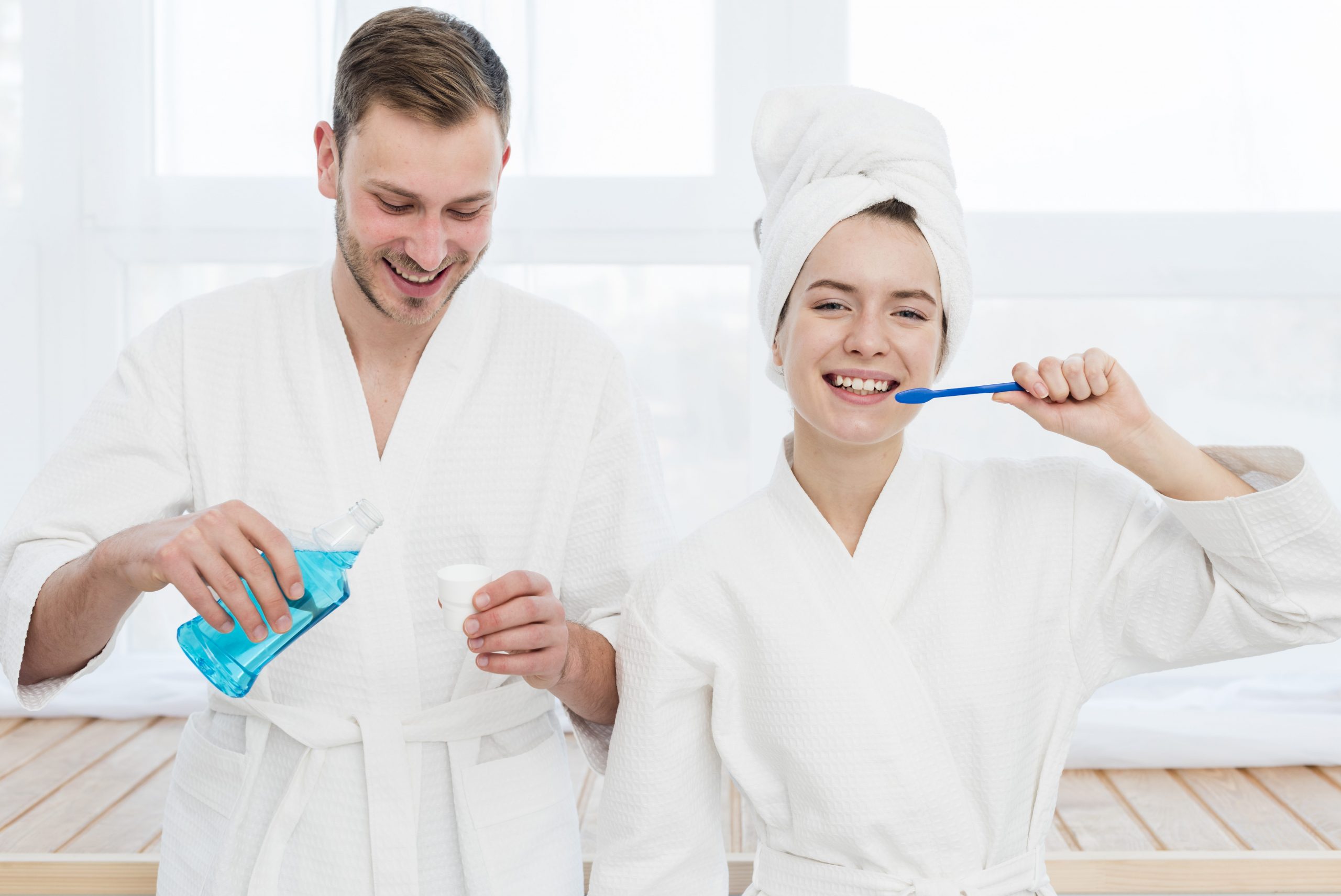Dental mouthwash does not offer a replacement for the mechanical brushing and flossing of teeth. However, they may help to augment the cleaning process in more susceptible people by reaching some of the more difficult spots.

Generally speaking, mouthwash is classified into two categories, cosmetic and therapeutic. Cosmetic mouthwash may temporarily mask bad breath and leave a ‘fresh taste’ or ‘fresh feeling’ in the mouth. If a mouthwash does not kill bacteria associated with bad breath, it is considered cosmetic. Therapeutic mouthwash, on the other hand, contain ingredients that will help control or reduce conditions like bad breath, dental caries, gum inflammation, plaque and tooth decay. Therapeutic mouthwash may contain ingredients like cetylpyridinium chloride which may be added to reduce bad breath, chlorhexidine and essential oils (eucalyptol, menthol, thymol and methyl salicylate). This is along with helping to reduce plaque and gum inflammation. Fluoride is added to reduce dental decay, while peroxide is added to several whitening mouthwashes.
Therapeutic mouthwash has been shown in many studies to reduce the levels of plaque when used in combination with brushing and flossing, however the overuse of some mouthwash may result in other issues. For example, although chlorhexidine is an effective agent to reduce plaque, the overuse of a chlorhexidine containing mouthwash may lead to staining of the teeth, tongue as well as potentially altering taste sensations. Mouthwash containing fluoride has been independently shown to reduce tooth decay in children, regardless of exposure to other sources of fluoride, such as fluoridated water and toothpaste containing fluoride. However, mouthwashes are not recommended for children as they tend to swallow larger than the recommended quantities.
Alcohol-free mouthwashes are recommended these days as alcohol can have a drying effect on the oral mucosa, actually increasing the risk of decay. Alcohol has also been linked to oral carcinoma, so for these reasons it may be prudent to avoid alcohol containing mouthwashes. Some mouthwashes will offer pain relief for mouth ulcers. These mouthwashes contain local anaesthetic agents such as lignocaine or benzocaine which will offer a barrier to pain associated with oral ulcers and mouth sores.
Many whitening mouthwashes will contain ingredients such as hydrogen peroxide or carbamide peroxide, typically in percentages of between 1-2%. If a dentist were to prescribe a similar material, the concentration of the active ingredient would be up to 10 times stronger. One study found that over a 12-week period of using a mouthwash containing hydrogen peroxide in the low concentration range, the result achieved a similar colour alteration as was achieved by 2 weeks of a 10% carbamide peroxide whitening gel.
Should we or should we not use mouthwash – it is best to consult your dentist. Alternatively make a personal choice but be aware of any long-term issues.

Dr Ian Sweeney is a dental surgeon at
Northside Dental & Implant Centre, Turramurra.











